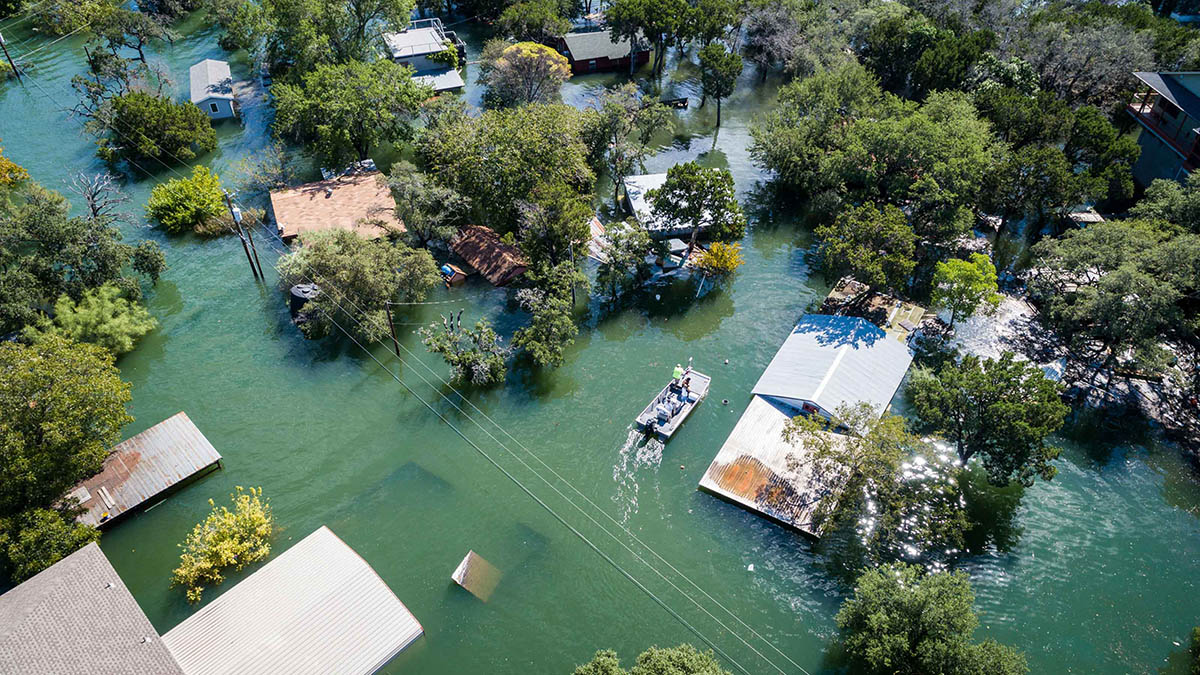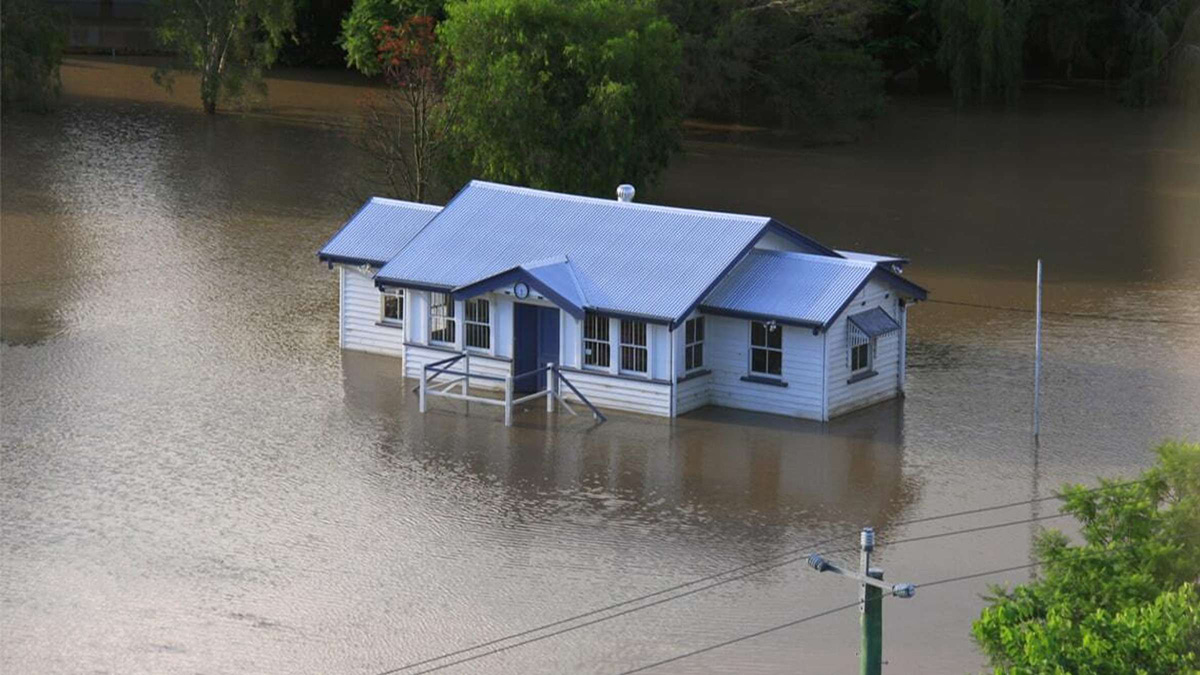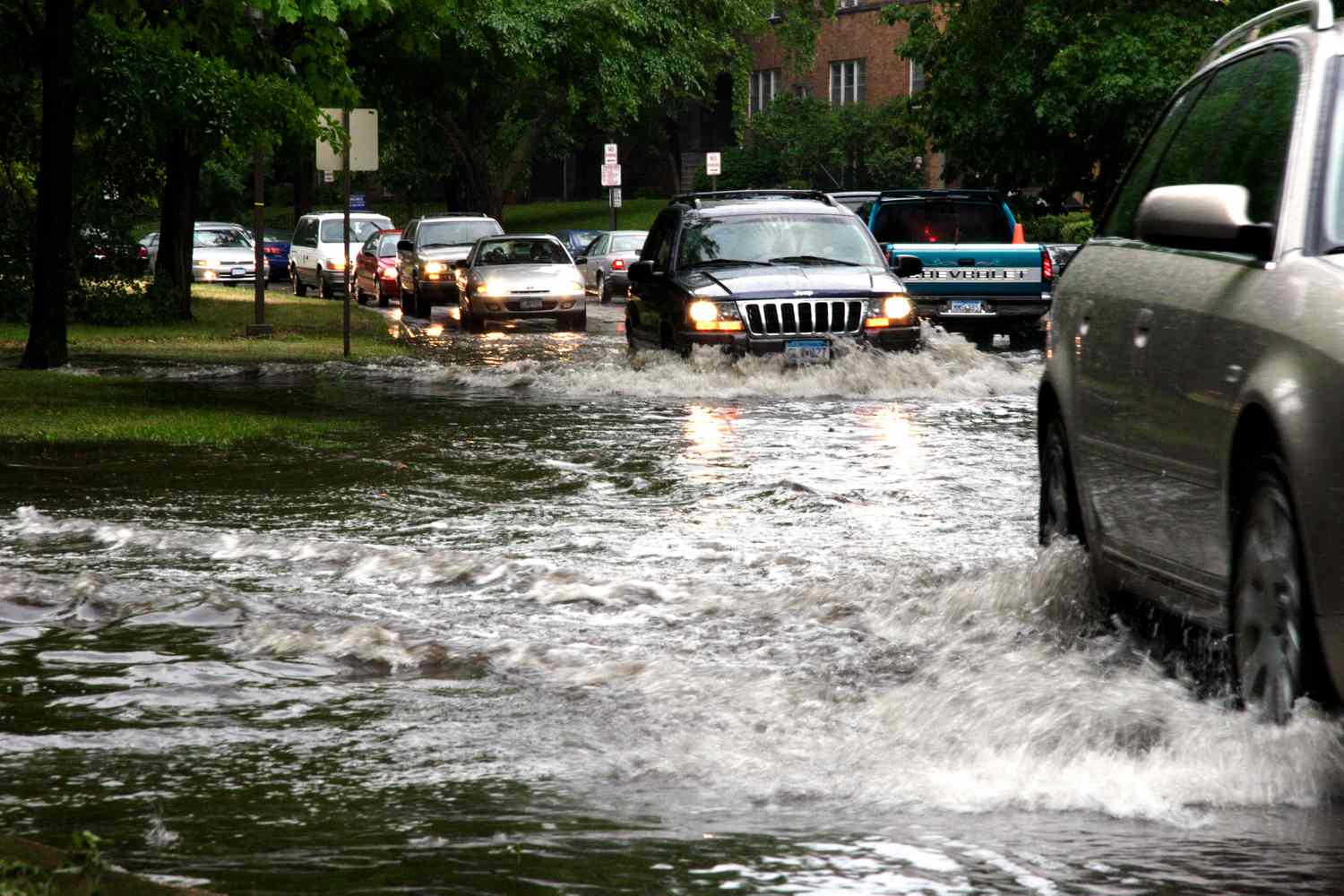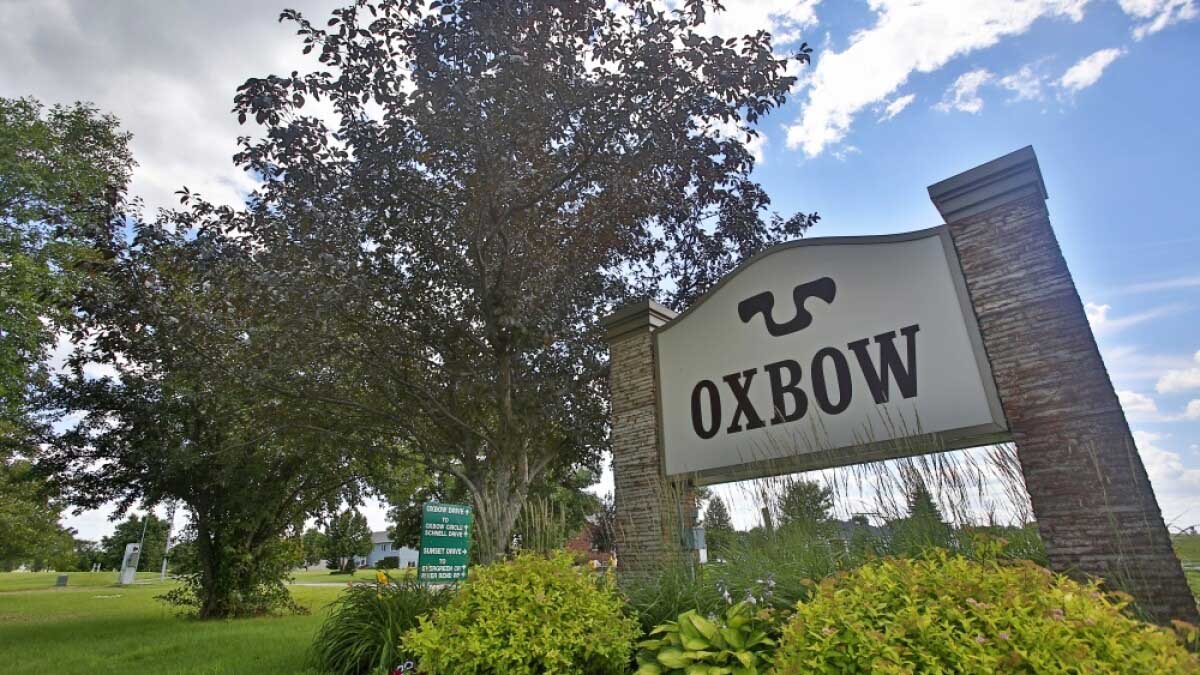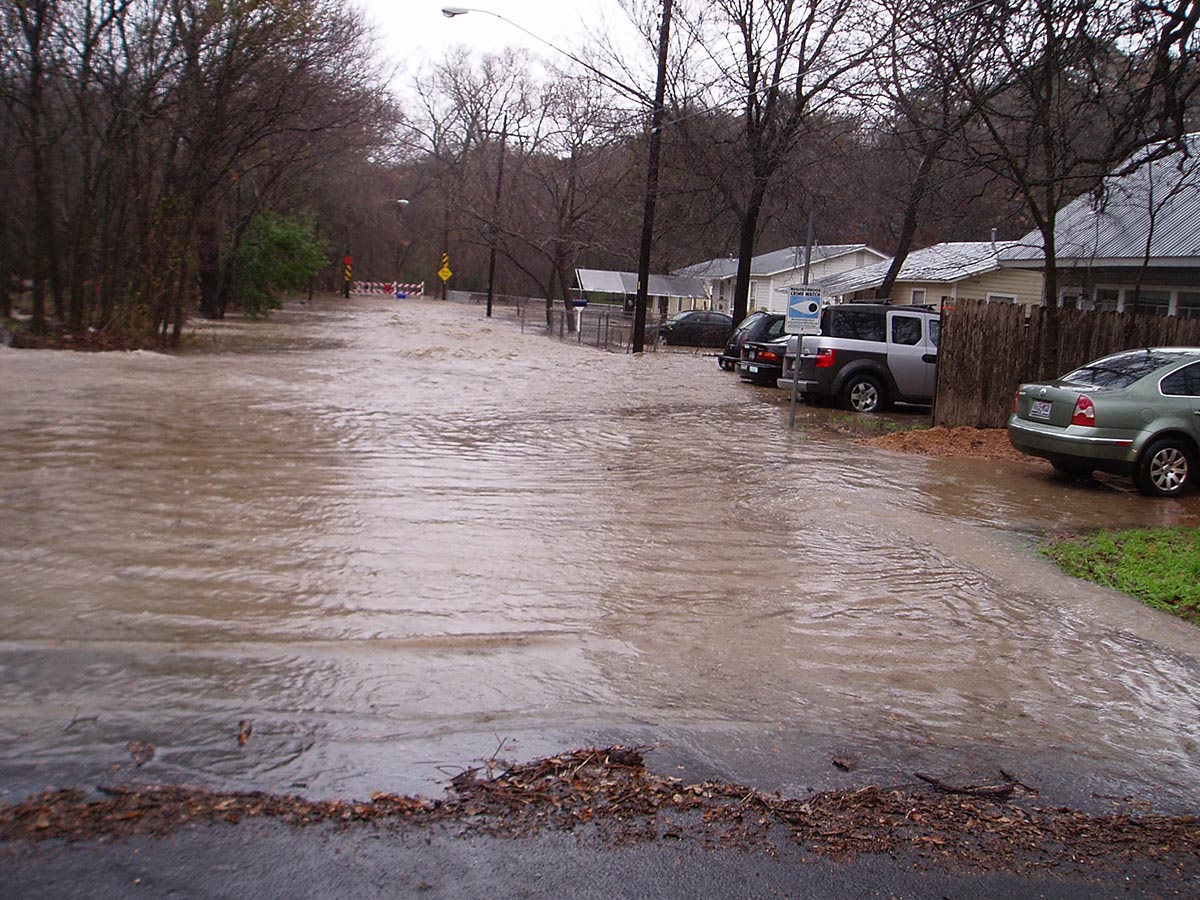

Finance
What Is Flood Plain Buyouts In Austin, TX
Modified: December 30, 2023
Looking for information on floodplain buyouts in Austin, TX? Get insights on the finance aspect of these processes and make informed decisions.
(Many of the links in this article redirect to a specific reviewed product. Your purchase of these products through affiliate links helps to generate commission for LiveWell, at no extra cost. Learn more)
Table of Contents
- Introduction
- Definition of Flood Plain Buyouts
- Purpose of Flood Plain Buyouts
- Process of Flood Plain Buyouts
- Benefits of Flood Plain Buyouts
- Challenges of Flood Plain Buyouts
- Case Study: Flood Plain Buyouts in Austin, TX
- Successes and Failures of Flood Plain Buyouts in Austin, TX
- Community Engagement in Flood Plain Buyouts
- Conclusion
Introduction
Flood plain buyouts in Austin, Texas, have become a critical component of the city’s disaster mitigation strategy. With an increasing number of severe weather events and a growing population, the city recognizes the importance of reducing the risk and impact of flooding. Flood plain buyouts offer an effective solution by acquiring properties in flood-prone areas and converting them to open space, parks, or other flood-resistant uses.
In simple terms, a flood plain buyout involves the voluntary purchase of properties located in high-risk flood zones by local government or non-profit organizations. These properties are then permanently removed from the flood plain, protecting them from future flood damage while also reducing the risk to nearby communities.
The primary objective of flood plain buyouts is to mitigate the potential damage caused by flooding. By removing structures in flood-prone areas, the severity and frequency of flooding can be significantly reduced. This proactive approach not only protects property owners from financial losses but also safeguards lives and provides environmental benefits. Additionally, flood plain buyouts contribute to the overall resilience and sustainability of the community by preserving natural habitats, improving water quality, and enhancing recreational opportunities.
Implementing flood plain buyouts requires a well-defined process that involves multiple stakeholders, including local government agencies, floodplain management departments, property owners, and community organizations. It is essential to strike a balance between the interests of property owners and the long-term goals of floodplain management.
While flood plain buyouts offer several benefits, they also come with their own set of challenges. The availability of funding, coordination with property owners, and determining fair market value for the properties are just a few of the hurdles that need to be overcome. Despite these challenges, many communities have successfully implemented flood plain buyout programs, including the city of Austin.
This article will delve into the definition, purpose, process, benefits, and challenges of flood plain buyouts. We will also examine a case study of flood plain buyouts in Austin, Texas, to explore the successes, failures, and community engagement involved. By understanding the intricacies of flood plain buyouts, we can develop a comprehensive perspective on the importance of this strategy in mitigating flood risks and creating resilient communities.
Definition of Flood Plain Buyouts
Flood plain buyouts refer to the process of acquiring properties located within flood-prone areas by government agencies or non-profit organizations. These properties are typically at a high risk of flooding due to their proximity to rivers, streams, or other bodies of water. The purpose of flood plain buyouts is to remove structures and developments from these vulnerable areas to reduce the risk of damage from flooding.
When a flood plain buyout program is implemented, property owners within the designated floodplain have the option to sell their properties voluntarily. The government or non-profit organization then purchases the properties at fair market value. Once the properties are acquired, they are permanently removed from the flood plain, allowing the land to be converted into open space, recreational areas, or other uses that are less prone to flood damage.
Flood plain buyouts are a proactive approach to floodplain management, prioritizing the reduction of flood risk and the protection of communities. By removing structures and returning the land to its natural state or implementing flood-resistant infrastructure, flood plain buyouts help reduce the severity and impact of future flooding events.
It is important to note that flood plain buyouts are voluntary, meaning that property owners have the choice to participate in the program. However, participation can provide several advantages for property owners, including the opportunity to receive fair compensation for their property, avoid future flood damages and associated expenses, and contribute to community resilience and safety.
Flood plain buyouts are typically part of a comprehensive floodplain management plan, which includes other strategies such as flood control infrastructure, land use regulations, and public education. By combining these approaches, communities can effectively manage flood risks and create safer environments for their residents.
It is important to distinguish flood plain buyouts from other approaches such as flood insurance and floodplain zoning. While flood insurance provides financial protection for property owners against flood damages, flood plain buyouts focus on removing structures from high-risk areas altogether. Similarly, floodplain zoning regulates land use and development within flood-prone areas but does not involve the acquisition and removal of properties.
Overall, flood plain buyouts are a proactive and strategic approach to mitigating flood risks and protecting communities. By removing structures from high-risk areas, these programs contribute to the resilience and long-term sustainability of flood-prone regions.
Purpose of Flood Plain Buyouts
The primary purpose of flood plain buyouts is to mitigate the potential damage caused by flooding and protect communities from the adverse impacts of flood events. By acquiring properties located within flood-prone areas, flood plain buyouts aim to achieve several key objectives:
1. Reducing the Risk of Flood Damage: Flood plain buyouts remove structures and developments from high-risk areas, thereby reducing the vulnerability of properties to flood damage. By removing these structures, the severity and frequency of flooding can be significantly reduced, minimizing the economic and environmental impacts on communities.
2. Safeguarding Lives and Property: By relocating structures away from flood-prone areas, flood plain buyouts help protect lives and property from the dangers and devastation caused by flood events. This proactive approach reduces the risk of injury or loss of life and ensures the safety and well-being of community members.
3. Preserving Natural Floodplains: Flood plain buyouts restore flood-prone areas to their natural state, allowing them to function as natural floodplains. This preservation of natural floodplains helps regulate the flow of water, reduces erosion, and enhances ecosystems’ resilience. It also provides valuable habitat for wildlife, improving overall biodiversity and ecological balance.
4. Enhancing Community Resilience: Investing in flood plain buyouts strengthens a community’s resilience to future flood events. By removing buildings and structures from flood-prone areas, communities can reduce the need for costly post-disaster recovery efforts and decrease reliance on emergency response measures. This increased resilience allows communities to recover more swiftly and reduces the long-term impact of flood events.
5. Creating Open Space and Recreational Areas: Once properties are acquired through flood plain buyouts, the land can be converted into open space, parks, or other recreational areas. These spaces provide a range of benefits to the community, including improved access to green spaces, enhanced quality of life, and recreational opportunities for residents.
6. Supporting Long-Term Sustainability: Flood plain buyouts contribute to the long-term sustainability of communities by reducing the risks associated with flood events. This strategic approach allows for better land-use planning, more efficient allocation of resources, and the preservation of critical infrastructure. It also supports the overall environmental health and sustainability of the region, promoting a healthier and more resilient community.
By prioritizing floodplain buyouts as part of a comprehensive flood risk management strategy, communities can reduce the vulnerability of their residents to flooding, protect valuable natural resources, and create safer and more sustainable environments for future generations.
Process of Flood Plain Buyouts
The process of implementing flood plain buyouts involves several key steps that ensure the effective acquisition and removal of properties from flood-prone areas:
1. Identification of High-Risk Areas: The first step in the process is to identify the flood-prone areas that pose the highest risk to communities. This usually involves conducting flood assessments, analyzing historical flood data, and mapping flood zones. The identification of these areas helps prioritize which properties should be targeted for buyouts.
2. Funding Allocation: Securing adequate funding is essential for the success of flood plain buyouts. Governments may allocate funds through federal or state programs, grants, or local budget provisions. Additionally, collaborations with non-profit organizations or partnerships with private entities can help supplement available resources. The funding should cover the costs of property acquisition, relocation, demolition, and associated administrative expenses.
3. Evaluation and Outreach: Once funding is secured, property owners within the identified flood plain areas are notified about the buyout program. Government agencies or non-profit organizations conduct outreach and provide information about the benefits and process involved. Property owners are given the opportunity to voluntarily participate in the program by expressing their interest in selling their properties.
4. Property Appraisal and Negotiation: Property appraisals are conducted to determine the fair market value of the properties targeted for buyouts. Appraisers assess the value of the land and the structures on it, considering factors such as location, size, and condition. Negotiations take place between the property owners and the acquiring entity to determine a mutually agreeable purchase price.
5. Property Acquisition: Once the purchase agreement is finalized, the acquiring entity proceeds with acquiring the properties. Property owners transfer ownership to the government agency or non-profit organization through a sale or voluntary transfer process. Legal documentation is completed, ensuring a smooth transfer of ownership.
6. Demolition and Restoration: Following property acquisition, the acquired structures are demolished, and the land is restored to its natural state or repurposed for flood-resistant uses. This may involve removing foundations, restoring vegetation, implementing flood mitigation measures, or converting the land into open space, parks, or recreational areas. The restoration process aims to enhance natural floodplain functions and reduce future flood risks.
7. Monitoring and Maintenance: It is important to monitor the effectiveness of flood plain buyouts and maintain the acquired properties over time. Regular monitoring of the restored areas helps assess the success of the program in reducing flood risks and achieving the desired outcomes. Ongoing maintenance ensures that the open spaces or flood-resistant structures are properly managed and continue to serve their intended purposes.
The process of flood plain buyouts requires collaboration between various stakeholders, including government agencies, non-profit organizations, property owners, and community members. Effective communication, transparency, and community engagement are crucial to establishing trust and obtaining voluntary participation from property owners.
By following these steps and implementing a well-defined process, communities can successfully execute flood plain buyouts and reduce the risks associated with flooding, creating safer and more resilient environments for their residents.
Benefits of Flood Plain Buyouts
Flood plain buyouts offer a range of benefits for communities and property owners alike. By voluntarily acquiring properties located in flood-prone areas, these buyouts contribute to both short-term and long-term advantages:
1. Reduced Flood Risk: By removing structures from flood-prone areas, flood plain buyouts significantly reduce the risk of flood damage to both the acquired properties and neighboring properties. This proactive approach helps protect lives, prevent property damage, and reduce the economic burden associated with post-flood recovery efforts.
2. Enhanced Community Safety: Flood plain buyouts prioritize the safety and well-being of community members. By relocating structures away from flood-prone areas, residents are safeguarded from the immediate dangers of flooding, including the risk of injury or loss of life. This contributes to the overall resilience and safety of the community.
3. Preservation of Natural Floodplains: Acquired properties can be restored to their natural state, creating or enhancing natural floodplains. These areas provide numerous benefits, including groundwater recharge, improved water quality, and enhanced wildlife habitats. Preserving natural floodplains also helps regulate the flow of water, reducing erosion and the potential for downstream flooding.
4. Creation of Open Spaces and Recreational Areas: Once properties are acquired, the land can be transformed into open spaces, parks, or other recreational areas. This provides valuable green spaces for the community to enjoy, promoting physical and mental well-being. Open spaces also contribute to the aesthetic appeal of the area, enhancing the quality of life for residents.
5. Long-Term Cost Savings: Investing in flood plain buyouts can result in long-term cost savings for communities. While the immediate expense of acquiring properties and implementing restoration measures may be significant, it can be outweighed by the avoided costs of future flood damage repairs, emergency response efforts, and ongoing floodplain management. In the long run, flood plain buyouts can be a cost-effective strategy for managing flood risks.
6. Environmental Benefits: Flood plain buyouts have positive environmental impacts. Restored floodplain areas can enhance biodiversity, support native vegetation, and provide habitat for wildlife. These areas also serve as natural buffers, absorbing and filtering stormwater runoff, which helps improve water quality in surrounding water bodies.
7. Community Resilience and Adaptation: By implementing flood plain buyouts, communities become more resilient to future flood events. Removing structures and developments from high-risk areas reduces the need for costly post-flood recovery efforts and emergency response measures. This proactive approach allows communities to recover more swiftly and adapt to the changing climate conditions.
8. Improved Equity and Social Justice: Flood plain buyouts can address social equity concerns by ensuring that vulnerable communities are not disproportionately affected by flood events. By prioritizing the acquisition of properties in low-income or marginalized neighborhoods, flood plain buyouts help ensure that all community members have equal access to safety and protection from flood risks.
These benefits demonstrate the value of flood plain buyouts as a crucial strategy in mitigating flood risks, protecting communities, and creating sustainable and resilient environments. By investing in these programs, communities can reduce the potential impacts of flooding, improve quality of life, and create a safer and more resilient future for residents.
Challenges of Flood Plain Buyouts
While flood plain buyouts offer numerous benefits, they also come with their fair share of challenges. These challenges can vary depending on the specific context and community involved. Understanding and addressing these challenges is crucial for the effective implementation of flood plain buyout programs:
1. Funding: One of the primary challenges of flood plain buyouts is securing adequate funding. Acquiring properties, demolishing structures, and restoring land can be expensive. However, the funds available through federal, state, or local programs may be limited, requiring communities to seek additional funding sources or prioritize which properties to acquire based on available resources.
2. Property Owner Participation: Flood plain buyouts are voluntary, meaning that property owners have the option to participate. Convincing property owners to sell their properties can be a challenge, as some may be emotionally attached to their homes or reluctant to relocate. Effective communication, outreach, and fair compensation packages are critical for gaining the voluntary participation of property owners.
3. Fair Market Value Assessment: Determining the fair market value of properties can be complex. Appraisals must account for factors such as the property’s location, size, condition, and potential future flood risks. Ensuring that property owners receive a fair and equitable offer is essential for gaining their trust and cooperation.
4. Coordination and Collaboration: Effective coordination among different stakeholders is crucial for the success of flood plain buyouts. This includes collaboration between government agencies, non-profit organizations, property owners, and community members. Ensuring clear lines of communication, establishing partnerships, and addressing concerns and feedback from all parties involved can be challenging but essential for a smooth implementation process.
5. Acquiring Properties in High-Demand Areas: In some cases, properties located in flood-prone areas may be in high demand due to factors such as scenic views or proximity to desirable amenities. Acquiring these properties may require additional negotiation or offer higher compensation to convince property owners to participate in the buyout program.
6. Relocation Challenges: Relocating property owners from flood-prone areas can be logistically challenging. Ensuring that suitable relocation options are available, including access to affordable housing and necessary amenities, is vital for a successful transition. Additionally, addressing the emotional and practical challenges of relocating, such as disrupting established social networks or finding alternative employment, is crucial for supporting property owners during the process.
7. Environmental Considerations: Implementing flood plain buyouts can have significant environmental considerations. It is essential to ensure that restoration efforts align with ecological goals, preserve biodiversity, and minimize disruptions to natural habitats. Balancing the needs of flood management with environmental conservation requires careful planning and collaboration between experts in both fields.
8. Community Engagement: Engaging and involving the broader community in flood plain buyouts can be challenging. Building public support, addressing concerns, and ensuring transparency throughout the process are critical for building trust and maintaining community buy-in.
Overall, addressing these challenges requires careful planning, effective communication, collaboration, and adequate resources. Despite the obstacles, successfully navigating these challenges can lead to significant benefits in terms of reducing flood risk, protecting communities, and creating more resilient environments for the future.
Case Study: Flood Plain Buyouts in Austin, TX
Austin, Texas, serves as a notable case study for the successful implementation of flood plain buyouts. Located near the confluence of the Colorado River and several creeks, Austin is prone to flooding during heavy rainfall events. In response to the increasing frequency and severity of floods, the city has actively pursued flood plain buyouts as a key strategy for managing flood risks and protecting vulnerable communities.
The City of Austin’s flood plain buyout program began in the 1990s and has since expanded to become one of the largest programs of its kind in the United States. The program is primarily funded through a combination of federal grants, local bond funding, and partnerships with non-profit organizations.
Over the years, the flood plain buyout program in Austin has acquired hundreds of properties located within flood-prone areas, particularly in neighborhoods along the Colorado River and its tributaries. These properties have been transformed into open spaces, parks, and natural areas that serve as buffers against floodwaters, protect nearby communities, and enhance ecological resilience.
A key success factor of the Austin flood plain buyout program is its commitment to community engagement. The city actively involves property owners, stakeholders, and residents in the decision-making process and provides opportunities for public input. This approach has helped build trust, increase participation, and ensure that the program addresses the specific needs and concerns of the community members affected.
One notable success of the flood plain buyout program in Austin is the Onion Creek neighborhood. Historically prone to severe flooding, the city strategically targeted properties in this area for acquisition and restoration. By acquiring and demolishing homes in the flood-prone zone, the flood plain buyout program effectively reduced flood risks for the Onion Creek community. The restored areas now serve as parkland and recreational spaces, contributing to the overall quality of life in the neighborhood.
However, the Austin flood plain buyout program has also faced challenges. Limited funding availability has hindered the expansion of the program and the acquisition of all desired properties. Additionally, property owner participation can be a challenge, as some residents are reluctant to sell their homes or struggle to find affordable housing options elsewhere.
Despite these challenges, the Austin flood plain buyout program continues to make significant progress in reducing flood risks and protecting vulnerable communities. The targeted acquisition of properties and the restoration of flood-prone areas have enhanced community resilience and created valuable open spaces for residents to enjoy.
The case of Austin serves as an exemplar of the benefits and challenges associated with flood plain buyouts. Through a combination of careful planning, community engagement, and strategic implementation, the city has showcased the effectiveness of flood plain buyouts in mitigating flood risks and creating more resilient and safer communities.
Successes and Failures of Flood Plain Buyouts in Austin, TX
The flood plain buyout program in Austin, Texas, has experienced both notable successes and challenges. Here, we examine the successes and failures of flood plain buyouts in Austin:
Successes:
1. Reduced flood risks: The flood plain buyout program in Austin has significantly reduced flood risks for communities located in flood-prone areas. By acquiring and removing structures from high-risk zones, the program has safeguarded lives, prevented property damage, and reduced the economic burden associated with flood events.
2. Enhanced community safety: The buyout program has prioritized the safety of residents by relocating them from flood-prone areas. This has reduced the immediate dangers of flooding, protecting residents from injury or loss of life.
3. Preserved natural floodplains: The acquisition and restoration of properties have allowed Austin to restore natural floodplains, enhancing water storage capacity, reducing erosion, and improving ecological resilience.
4. Creation of valuable open spaces: By transforming acquired properties into parks, recreational areas, and open spaces, the program has beautified neighborhoods and provided residents with valuable green spaces for recreational activities, promoting physical and mental well-being.
5. Strong community engagement: The program’s success can be attributed, in part, to its robust community engagement efforts. The city actively involves property owners, stakeholders, and residents in the decision-making process, ensuring that their voices are heard and their concerns addressed.
Failures:
1. Limited funding: The availability of funding has been a challenge for the program, limiting its expansion and acquisition capabilities. The demand for buyouts often surpasses the available funds, resulting in a slower pace of implementation than desired.
2. Property owner participation: Convincing property owners to participate in the buyout program can be challenging. Some owners may be emotionally attached to their homes or reluctant to relocate, leading to lower participation rates.
3. Affordable housing options: Finding suitable and affordable housing options for property owners who participate in the buyout program can be a challenge. Ensuring that displaced residents have access to affordable housing and necessary amenities remains an ongoing concern.
4. Complex acquisition process: The process of acquiring properties and navigating the legal and administrative aspects can be time-consuming and complicated. This can result in delays and difficulties in the execution of the buyout program.
5. Partial buyouts: In some cases, the buyout program may only acquire a portion of a property, leaving some structures or infrastructure remaining within the flood-prone area. This can undermine the effectiveness of the program in reducing flood risks and can create challenges for the remaining property owners.
While the flood plain buyout program in Austin has faced challenges, its successes in reducing flood risks and enhancing community safety demonstrate the value of this approach. The city continues to learn from its experiences and adapt its strategies to overcome challenges and further improve the effectiveness of the program for the benefit of its residents.
Community Engagement in Flood Plain Buyouts
Community engagement plays a vital role in the successful implementation of flood plain buyouts. Involving property owners, stakeholders, and residents in the decision-making process fosters transparency, builds trust, and ensures that the buyout program addresses the specific needs and concerns of the community. Here are key aspects of community engagement in flood plain buyouts:
1. Informing and Educating: Open and effective communication is crucial in gaining community support and participation. Providing clear and accessible information about the purpose, benefits, and process of flood plain buyouts helps property owners and residents understand the program’s objectives and how it will impact them.
2. Listening and Addressing Concerns: Actively engaging with community members through public meetings, workshops, or individual consultations allows for a two-way dialogue. This enables property owners to voice their concerns, ask questions, and provide valuable insights. Addressing these concerns and providing accurate and transparent information builds trust and confidence in the program.
3. Ensuring Equity and Social Justice: It is crucial to consider the specific needs of vulnerable and marginalized communities throughout the buyout process. Engaging with these communities ensures their concerns are heard, and the program is tailored to address their unique challenges. This promotes equity, social justice, and equal access to the benefits and opportunities provided by flood plain buyouts.
4. Collaborating with Community Organizations: Partnering with local community organizations and grassroots groups can enhance community engagement efforts. These organizations often have established relationships with community members and can help facilitate communication, provide a platform for dialogue, and ensure that community voices are heard and represented in decision-making processes.
5. Empowering Property Owners: Providing property owners with relevant information, resources, and assistance throughout the buyout process is crucial. This may include guidance on financial options, legal processes, and available support services. Empowering property owners with knowledge and support increases their confidence in the program and facilitates their informed decision-making.
6. Considering Cultural and Historical Factors: Sensitivity to cultural and historical aspects of the community is essential. Recognizing and respecting the unique heritage and traditions of the area can help foster community trust and ensure that the buyout program is designed and implemented with cultural preservation in mind.
7. Collaborative Decision-making: Involving community members in decision-making processes, such as site selection or land use planning for acquired properties, strengthens community ownership and increases the likelihood of successful outcomes. Soliciting input, considering community preferences, and involving residents in the planning stages foster a sense of ownership and shared responsibility.
8. Keeping the Community Updated: Regularly updating the community on the progress of the buyout program, sharing success stories, and providing information on any changes or challenges ensures ongoing engagement and transparency. This allows community members to stay informed, provide feedback, and maintain a sense of connection with the program.
By prioritizing community engagement throughout the flood plain buyout process, it becomes a collaborative effort that reflects the needs, values, and aspirations of the community. Effective communication, active listening, and equitable decision-making are essential components in building trust, achieving successful outcomes, and creating resilient and cohesive communities.
Conclusion
Flood plain buyouts have emerged as a valuable strategy in mitigating flood risks and creating resilient communities. By acquiring properties located in flood-prone areas and converting them into open spaces or flood-resistant uses, flood plain buyouts reduce the potential for flood-related damages, protect lives, and contribute to the long-term sustainability of communities.
The case study of Austin, Texas, demonstrates how proactive floodplain management, including flood plain buyouts, can effectively reduce flood risks and enhance community safety. Austin’s flood plain buyout program has successfully acquired properties, restored natural floodplains, and created valuable recreational spaces, improving the quality of life for residents and increasing the city’s resilience to flooding events.
While flood plain buyouts offer numerous benefits, their implementation comes with challenges. Limited funding, property owner participation, and the complex acquisition process are among the hurdles that need to be addressed. However, through community engagement, transparency, and effective communication, these challenges can be overcome, and the buyout programs can be enhanced to meet the unique needs of each community.
Community engagement is a crucial aspect of flood plain buyouts, ensuring that the voices of property owners, residents, and stakeholders are heard and incorporated into decision-making processes. By involving the community in the planning, implementation, and evaluation of flood plain buyouts, trust is built, concerns are addressed, and equitable solutions are generated.
In conclusion, flood plain buyouts offer a proactive and strategic approach to managing flood risks and building resilient communities. By reducing flood risks, protecting lives and property, preserving natural floodplains, and enhancing community safety, flood plain buyouts play a crucial role in creating sustainable and resilient environments. Through effective community engagement, collaboration, and ongoing monitoring, flood plain buyout programs can continue to evolve and adapt, ensuring that flood-prone communities are better equipped to face the challenges of a changing climate and protect the well-being of their residents for generations to come.

